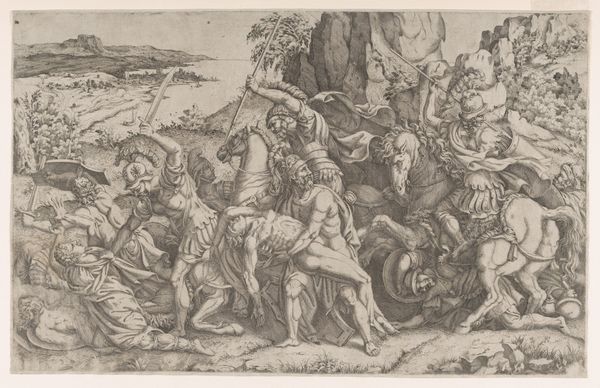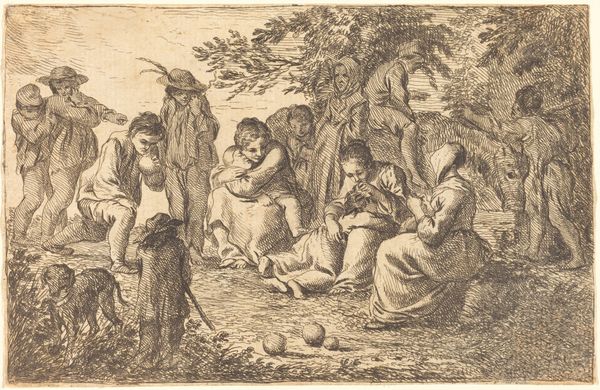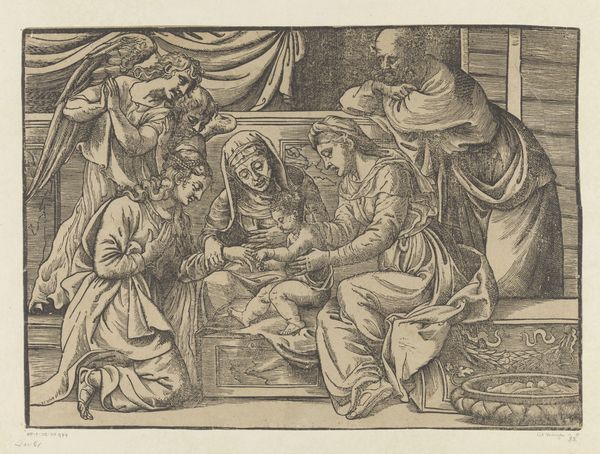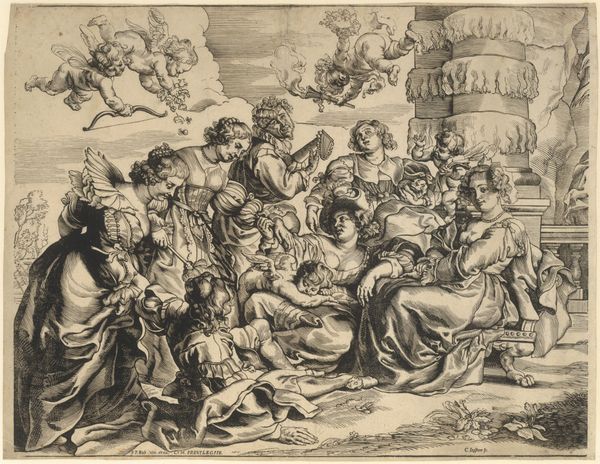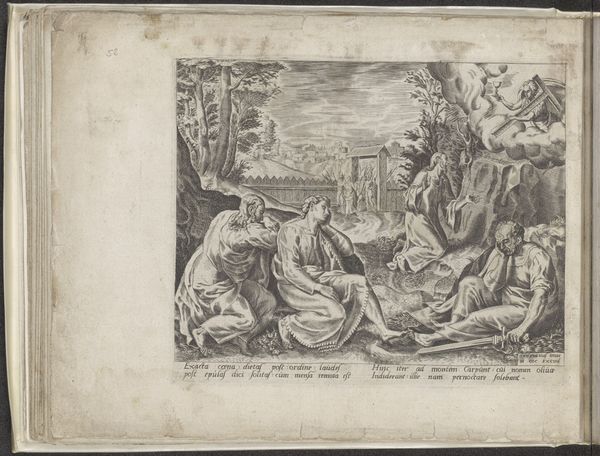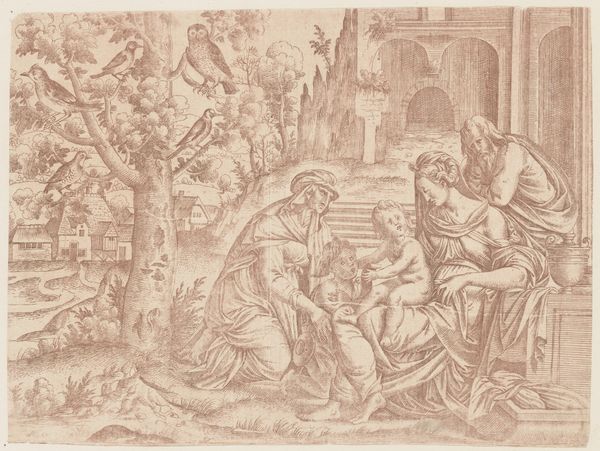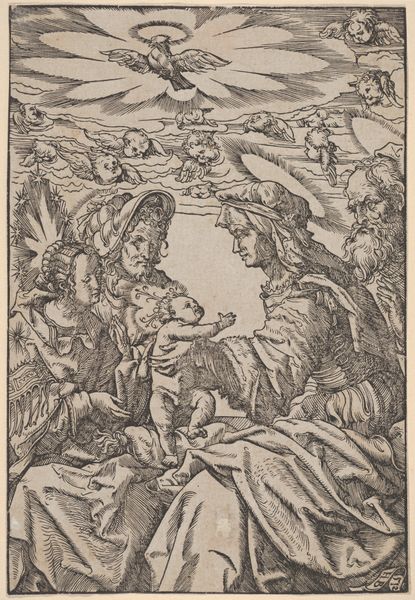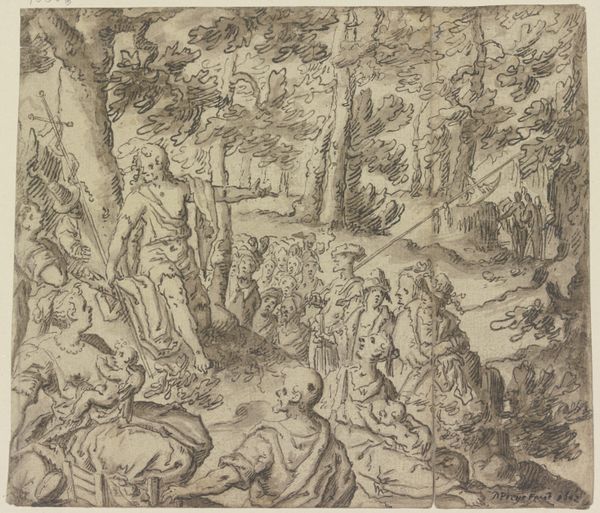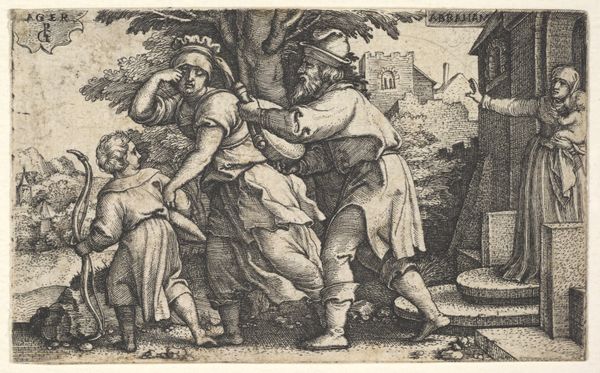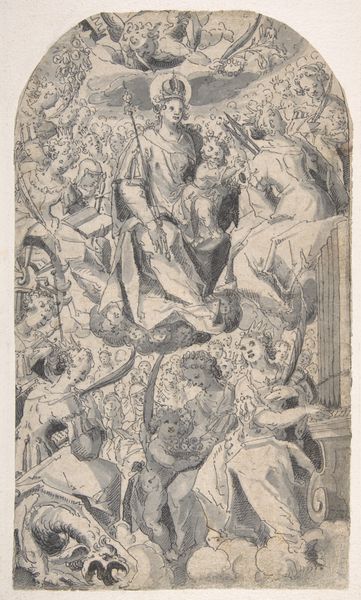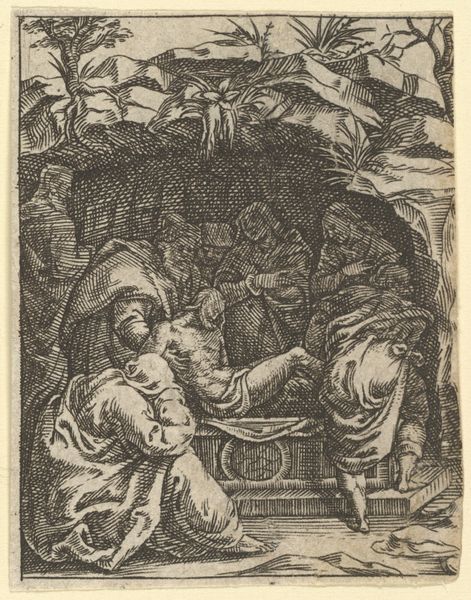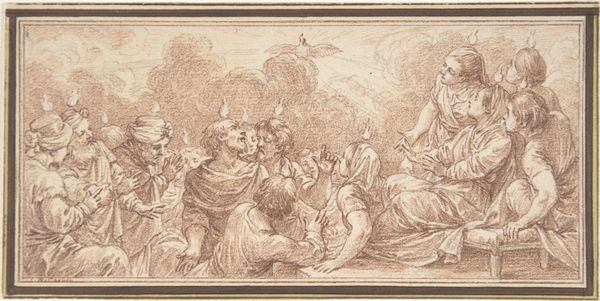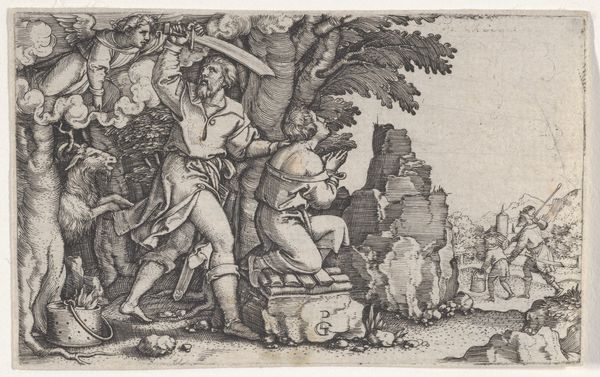
Apollo on Parnassus (Apollon sur le Parnasse) 1540 - 1583
0:00
0:00
drawing, print, etching, ink, engraving
#
drawing
#
ink drawing
#
allegory
#
pen drawing
# print
#
pen illustration
#
pen sketch
#
etching
#
figuration
#
11_renaissance
#
ink
#
history-painting
#
musical-instrument
#
engraving
Dimensions: Image: 1 9/16 × 2 3/16 in. (4 × 5.6 cm) Sheet: 3 7/16 × 5 1/16 in. (8.8 × 12.9 cm)
Copyright: Public Domain
Editor: This is Etienne Delaune’s “Apollo on Parnassus,” an engraving, etching, and ink drawing made sometime between 1540 and 1583. It feels like a scene pulled directly from mythology. There's Apollo playing what looks like a cello, surrounded by figures, some with instruments. It’s a very active composition. How would you interpret this work? Curator: Looking at "Apollo on Parnassus" through a historical lens, it's interesting to consider how Delaune situates himself within the artistic and intellectual climate of his time. This engraving points to the revival of classical themes during the Renaissance, which became potent visual tools to communicate ideas about power and culture. Does the setting of Mount Parnassus, home of the Muses, say something about the public role of art in that era? Editor: It definitely highlights the importance of art and knowledge. But who exactly was this artist and what was his access like? Curator: Delaune, active in the 16th century, was a French printmaker who designed medals and ornaments for royal patrons. It is safe to assume that the allegorical scene presents a curated vision designed for a select audience familiar with classical culture. The dense composition is reminiscent of courtly settings, even tapestry design, but here made widely available thanks to printmaking technologies. What do you make of the clear allusion to music-making as part of an allegorical image about art? Editor: That's interesting, it connects back to my music classes too. Considering music and arts in general as propaganda actually makes me see it very differently. Curator: Precisely! This challenges us to reconsider what appears to be an idyllic scene of artistic creation in terms of its social function and dissemination of visual knowledge. Perhaps that is the central idea to be gathered, even if it remains a lovely musical performance! Editor: I will certainly think about Delaune's patrons when viewing artwork moving forward. Thanks for opening my eyes.
Comments
No comments
Be the first to comment and join the conversation on the ultimate creative platform.
